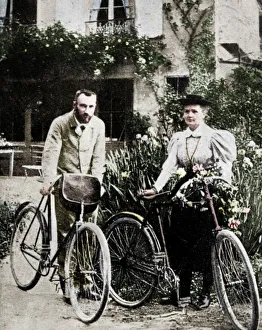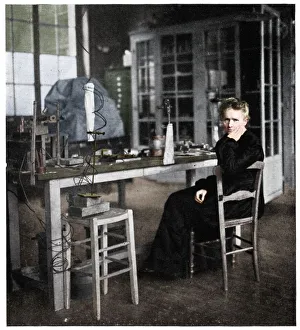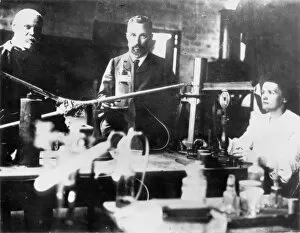Antoine Henri Becquerel Collection
Antoine Henri Becquerel, a prominent French physicist of the late 19th and early 20th century, played a significant role in the field of radioactivity
All Professionally Made to Order for Quick Shipping
Antoine Henri Becquerel, a prominent French physicist of the late 19th and early 20th century, played a significant role in the field of radioactivity. Known for his groundbreaking discoveries, he was part of an era that witnessed remarkable scientific advancements. In this captivating image captured by Nadar around the 1890s, we see a young Henri Becquerel engrossed in his research. Little did he know that his experiments with uranium salts would lead to one of the most important scientific breakthroughs in history. Becquerel's work caught the attention of another brilliant mind - Marie Sklodowska Curie. Together with her husband Pierre Curie, they embarked on their own journey into understanding radioactivity. The trio formed an extraordinary collaboration that forever changed our understanding of physics. Pierre and Marie Curie were not only partners in science but also enjoyed leisurely activities like cycling together as seen in this charming photograph from their time at Sorbonne University. Their shared passion for knowledge and exploration fueled their groundbreaking research. Marie Curie herself became an iconic figure within the scientific community. This photograph taken in 1904 showcases her dedication to unraveling the mysteries of radiation while balancing her roles as a wife and mother. Throughout her career, Marie continued to push boundaries and challenge societal norms. In this laboratory portrait from 1912, she stands amidst equipment and instruments – symbols of her unwavering commitment to advancing scientific knowledge despite facing numerous obstacles along the way. As years passed, both Pierre and Marie received recognition for their contributions to science. Here we see Pierre Curie during his tenure as Professor of Physics at Sorbonne University in 1906 – a testament to his expertise and influence within academia. Despite tragedy striking when Pierre lost his life due to an accident involving horse-drawn carriages, Marie persevered undeterred by grief or setbacks.



















